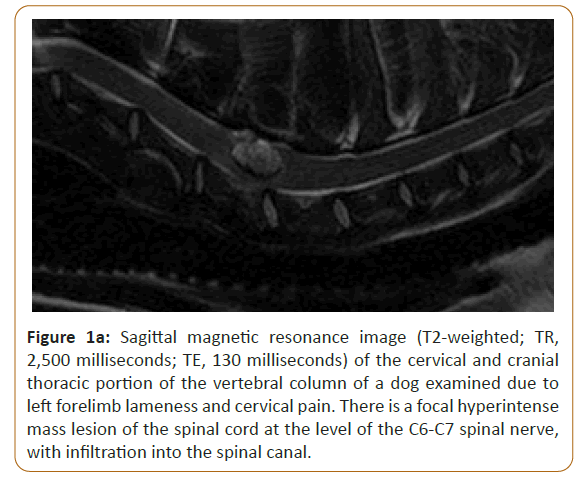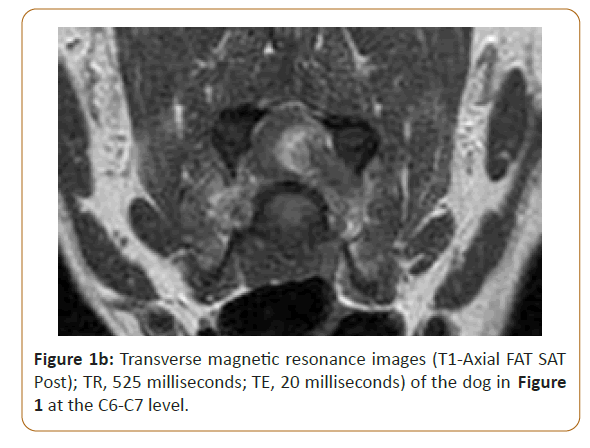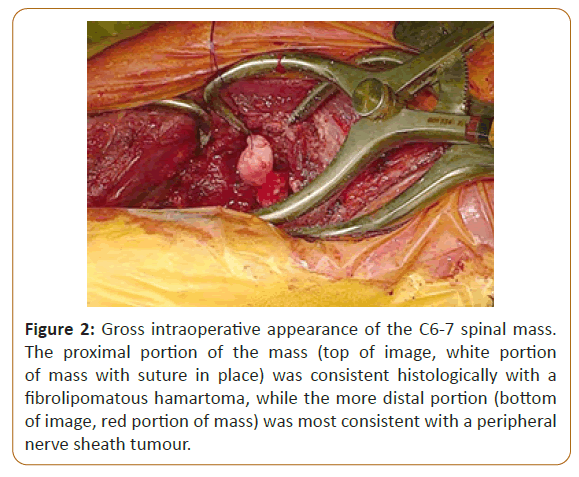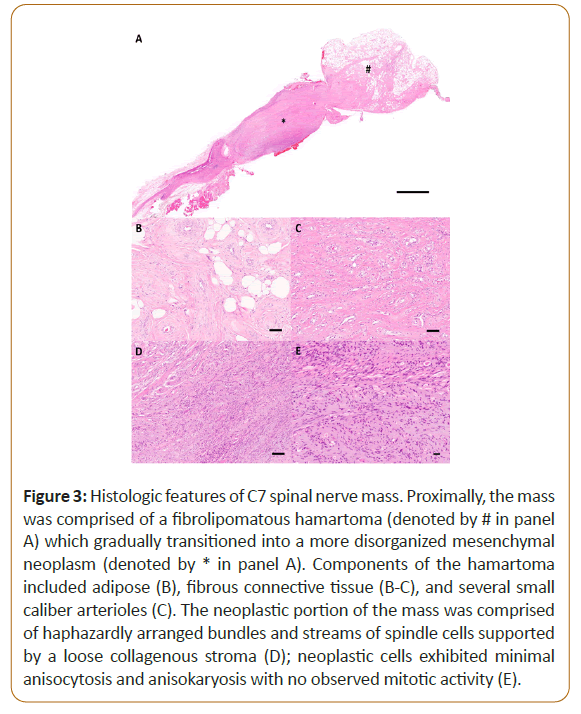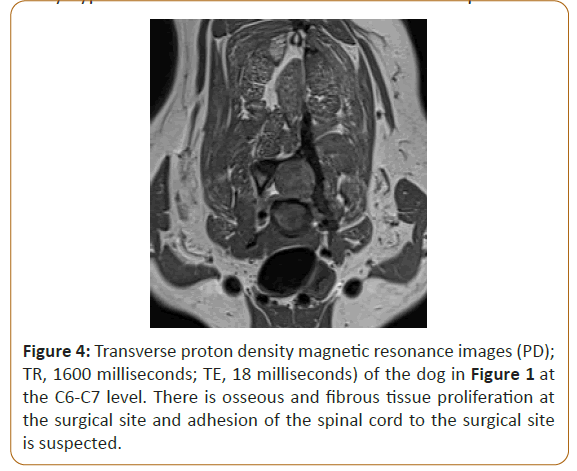Annalis Cigarroa1, Peter J Early1*, Mancini Shelby L1, Luke Borst B2, Megan Schreeg E2,3
1 Department of Veterinary Medicine North Carolina State University of Veterinary Teaching Hospital, 1052 William Moore Drive, Raleigh, NC, 27607, United States of America
2 Department of Population Health and Pathobiology North Carolina State University of Veterinary Teaching Hospital, 1052 William Moore Drive, Raleigh, NC, 27607, United States of America
3 Department of Veterinary Biosciences, The Ohio State University, 1925 Coffey Road Columbus, OH, 43210, United States of America
- *Corresponding Author:
- Early PJ
Department of Veterinary Medicine North Carolina State University of Veterinary Teaching Hospital,
1052 William Moore Drive,
Raleigh, NC, 27607,
United States of America,
Tel: +1919-513-6692,
E-mail:pjearly@ncsu.edu
Received Date: May 25, 2021;Accepted Date: June 8, 2021; Published Date: June 15, 2021
Citation: Cigarroa A, Early PJ, Mancini SL, Schreeg ME, Borst LB (2021) Mesenchymal Tumour Arising from within a Canine Spinal Cord Hamartoma Features. J Vet Med Surg Vol.5 No.3: 38.
Keywords
Spinal cord; Peripheral nerve; Neurolocalization; Mesenchymal;
Surgical treatment; Radiation therapy
Introduction
This case report describes the clinical progression, imaging
findings, surgical treatment, and post-surgical imaging of a mixed
hamartoma and peripheral nerve sheath tumour in the canine
spinal cord. Due to the lack of knowledge regarding hamartomas
of the canine nervous system, this case provides new information
to the limited number of reports. This report is also unique due
to the mixed tumour characteristics identified at histopathology
as well as post-operative follow-up.
Case Study
A five-year-old male castrated Jack Russell Terrier was referred to
the North Carolina State University (NCSU) Neurology Service in
May of 2019 for surgical treatment of a spinal mass at the level of
7th cervical spinal nerve with infiltration into the spinal cord from
the left noted on MRI performed at a local specialty hospital. The
patient had a progressive one-year history of cervical pain and
left thoracic limb lameness that worsened over the few months
leading up to his MRI diagnosis. On presentation to NCSU, the
initial exam revealed a mild left thoracic limb lameness with
normal postural reactions and slightly decreased strength of
withdrawal in the left thoracic limb. Mild cervical pain was
elicited on palpation, and there was a reduced range of motion in
the cervical region. The remainder of the physical and neurologic
exams were unremarkable. Neurolocalization was consistent with
a C6-T2 myelopathy. The previously performed MRI revealed a 1.1
x 0.7 x 0.8 cm extramedullary, possibly intradural, a mass lesion
within the left aspect of the vertebral canal. The mass extended
from the level between the 6th and 7th cervical vertebrae,
spanned approximately 50% of the canal’s width, and extended
peripherally into the C6-C7 intervertebral foramen and 2 cm
distal following the normal course of the C7 nerve root (Figures
1a and 1b). The variation in signal intensity of the vertebral canal mass characteristics consistent with fat, hemorrhage , and contrast-enhancing tissue. Neoplasia was strongly suspected,
with differentials including liposarcoma, round cell neoplasia,
and hemorrhagic meningioma. Cerebrospinal fluid obtained at
the time of the MRI revealed a mild lymphocytic pleocytosis.
Figure 1a: Sagittal magnetic resonance image (T2-weighted; TR,
2,500 milliseconds; TE, 130 milliseconds) of the cervical and cranial
thoracic portion of the vertebral column of a dog examined due to
left forelimb lameness and cervical pain. There is a focal hyperintense
mass lesion of the spinal cord at the level of the C6-C7 spinal nerve,
with infiltration into the spinal canal.
Figure 1b: Transverse magnetic resonance images (T1-Axial FAT SAT Post); TR, 525 milliseconds; TE, 20 milliseconds) of the dog in Figure 1 at the C6-C7 level.
A modified dorsal hemilaminectomy was performed at C6-7.
The patient was placed in sternal recumbency with his head
moderately flexed ventrally. The dorsal cervical area was prepped
and draped. A left dorsal approach was made to the cervical
vertebrae with the nuchal ligament positioned to the right of the
midline to allow the paraspinal muscles to be reflected from the
spinal column from C5 to T1. A left dorsal hemilaminectomy was
performed over C6-7 and extended laterally to expose the left C7 nerve root. The extradural and intradural mass was identified
at the level of the C7 nerve root (Figure 2). A durotomy was
performed over C6-7, which exposed the tumour extending along
with the spinal nerve roots, with extension into the adjacent
spinal cord parenchyma. The mass was moderately adhered
to the dura ventrally and mildly adhered to the spinal cord
parenchyma. The visible tumour extended peripherally along the
C7 spinal nerve to the level about 2 cm ventral to the vertebral
artery. At this distal extent, the nerve texture grossly palpated
and resembled that of a typical normal spinal nerve. The C7 nerve
was transacted at the level of the grossly normal nerve so that
visible mass was removed and submitted for histopathology. The
spinal cord was decompressed with no obvious damage to the
vertebral artery. The closure was routine. The patient recovered
well and was managed with IV, oral pain medications, and a single
intraforaminal injection of bupivacaine and methylprednisolone
administered at the level of C6-7 the day after surgery. At
discharge, six days after surgery, the patient had mild pain on
cervical manipulation and was non-ambulatory hemiparetic on
the left side. At home, medical management consisted of cage
rest and pain control medications.
Figure 2: Gross intraoperative appearance of the C6-7 spinal mass.
The proximal portion of the mass (top of image, white portion
of mass with suture in place) was consistent histologically with a
fibrolipomatous hamartoma, while the more distal portion (bottom
of image, red portion of mass) was most consistent with a peripheral
nerve sheath tumour.
Histopathologic features of the mass were consistent with a
mesenchymal tumour arising in a fibrolipomatous hamartoma.
Microscopically, the main portion of the mass was composed
of dense mature fibrous connective tissue that separated and
surrounded lobules of mature adipose tissue (Figure 3A) and
was punctuated by many variably sized mature arterioles (Figure
3B). The fibrovascular tissue extended into the nerve root,
peripheralizing and compressing the ganglion and degenerative
axons against the perineurium. As the mass travelled along the
nerve, it became progressively more disorganized with looser
interwoven bundles and streams of fusiform cells resting in
eosinophilic fibrillar stroma separated by clear space (Figures 3C
and 3D). The fusiform cells exhibited minimal anisocytosis and
anisokaryosis, and nuclei were elongated with coarsely clumped
chromatin (Figure 3E). Mitotic figures were not visualized.
Compressed between this mass and the surrounding perineurium were streams of hypertrophied and hyperplastic Schwann cells
with rare isolated dilated myelin sheaths with fragmented
globules of myelin indicative of myelin degeneration. Occasional
aggregates of lymphocytes, plasma cells, and macrophages were
scattered throughout these regions. Given the histologic features
and anatomic location, the mesenchymal neoplasm component
of the mass was considered most consistent with a peripheral
nerve sheath tumour.
Figure 3: Histologic features of C7 spinal nerve mass. Proximally, the mass was comprised of a fibrolipomatous hamartoma (denoted by # in panel A) which gradually transitioned into a more disorganized mesenchymal neoplasm (denoted by * in panel A). Components of the hamartoma included adipose (B), fibrous connective tissue (B-C), and several small caliber arterioles (C). The neoplastic portion of the mass was comprised of haphazardly arranged bundles and streams of spindle cells supported by a loose collagenous stroma (D); neoplastic cells exhibited minimal anisocytosis and anisokaryosis with no observed mitotic activity (E).
One month later, the patient represented to NCSU for RT to
possibly slow the progression of tumour regrowth and increase
survival time. At that visit, the patient was ambulatory with left-
sided hemiparesis. Mild general postural reaction deficits were
noted in the left thoracic limb and left pelvic limb. An MRI and
computerized Tomography (CT) was performed for RT planning.
The MRI revealed the bulk of the prior mass lesion at the level
of the left C6-7 intervertebral foramen and C7 nerve root had
been excised. The intervertebral foramen was widened at this
level, reflecting the surgical removal of portions of the left-sided
pedicles and C6-7 articular process. There were multiple foci of
susceptibility artifact continuing dorsally to the subcutaneous
tissue and skin consistent with the previous surgical incision. The
spinal cord was displaced left laterally at the level of the C6-7
foramen. The spinal cord otherwise appeared to be of normal
intensity with no obvious compression. Regional lymph nodes
included in the view were normal. No evidence of macroscopic
disease was identified.
Radiation Therapy (RT) was scheduled to start approximately one
month after surgery, but prior to starting treatment, the patient
developed nausea and lethargy. Bloodwork revealed elevated
hepatic enzymes, elevated bilirubin, and elevations in amylase
and lipase. An abdominal ultrasound was performed. Diagnostics
were considered consistent with acute pancreatitis. The patient
improved with supportive care. Definitive RT (52.5 Gy total dose,
25 daily 2.1 Gy fractions) was instituted approximately 2-months
after surgery. A 3D conformational RT plan and 6 MV photons
were utilized along with daily image guidance (4 planning hours).
The patient did not have any significant side effects other than
mild coughing, suspected tracheitis secondary to RT, and skin
irritation at the site of the radiation field. The patient was treated
throughout with gabapentin for mild cervical pain.
Six months postoperatively, the patient returned for a recheck
MRI. The owner reported the patientâ??s mobility improved, but
he remained painful in his cervical region. A neurologic exam
revealed an ambulatory left hemiparesis with mild to moderate
left thoracic limb lameness. Postural reactions were delayed in
the left thoracic limb and absent in the left pelvic limb. Moderate
pain on caudal cervical palpation was present. The MRI revealed
changes consistent with the prior surgical removal of portions
of the left-sided pedicles and C6-7 articular process and surgical
incision. The MRI also indicated marked osseous and fibrotic tissue
proliferation at the surgical site and adhesion of this tissue to the
adjacent spinal cord (Figure 4). No evidence of gross neoplasia or
metastatic disease was present. The spinal cord itself was focally
expanded from the level of C5-6 to C7-T1 with mild dilation of
the central canal. At C6-7, the left portion of the spinal cord was
mildly hyperintense on T2 relative to the rest of the spinal cord.
Figure 4: Transverse proton density magnetic resonance images (PD); TR, 1600 milliseconds; TE, 18 milliseconds) of the dog in Figure 1 at the C6-C7 level. There is osseous and fibrous tissue proliferation at
the surgical site and adhesion of the spinal cord to the surgical site is suspected.
Eleven months postoperatively, the patient exhibited increased
pain and difficulty ambulating. An MRI was performed and was
supportive of tumour regrowth. The patient was euthanized three
months later due to a further decline in his clinical condition. A
necropsy was not performed.
Discussion
Hamartomas are congenital overgrowths of tissue elements found
in the organ from which they arise. Although they are generally
considered benign anomalies, they can cause secondary effects
due to compression. This has led to their description as a link
between malformations and neoplasia [1]. Previous reports on
canine hamartomas have documented their presence in vascular,
mesenchymal, muscular, and cutaneous adnexal tissue. Within
the nervous system, the vast majority are vascular in origin
[2]. While cerebral vascular hamartomas have been reported
multiple times in the canine veterinary literature only one report
currently exists documenting a vascular hamartoma within the
spinal cord [1,3]. Additionally, a single report documents a cranial
nerve hamartoma [2]. There are no reports which describe
transformation into a peripheral nerve sheath tumour.
Hamartomas are congenital overgrowths of tissue elements found
in the organ from which they arise. Although they are generally
considered benign anomalies, they can cause secondary effects
due to compression. This has led to their description as a link
between malformations and neoplasia [1]. Previous reports on
canine hamartomas have documented their presence in vascular,
mesenchymal, muscular, and cutaneous adnexal tissue. Within
the nervous system, the vast majority are vascular in origin
[2]. While cerebral vascular hamartomas have been reported
multiple times in the canine veterinary literature only one report
currently exists documenting a vascular hamartoma within the
spinal cord [1,3]. Additionally, a single report documents a cranial
nerve hamartoma [2]. There are no reports which describe
transformation into a peripheral nerve sheath tumour.
Tumours of the paraspinal peripheral nerves have previously
been classified with inconsistent terminology. The current
WHO designation adapted for veterinary use includes four
major subtypes: schwannoma, neurofibroma, perineurioma,
and malignant peripheral nerve sheath tumour (PNST) [6].
PNST histologic characteristics include a high cell density of
pleomorphic spindle cells with characteristics of malignancy [6].
They originate from Schwann cells, endoneurial fibroblast cells,
and epineurial fibroblast cells close to the axial skeleton [6]. A
retrospective study further classified PNST of the tract C6-T2 into
subcategories based on their location. These categories include
“peripheral” if nerves distal to the plexus are involved, “of the
plexus” if the brachial plexus is involved and the emerging nerves
from C5 to T2 distal to the intervertebral foramina, or “of the
roots” if involving the dorsal or ventral roots. [7,8].
Peripheral Nerve Sheath Tumours (PNST) typically occur in dogs
older than five years and cause ipsilateral neurologic deficits and
pain [7,9,10]. Common features include local invasion of soft
tissue or metastasis [10]. Treatment depends on the location of
the tumour. Surgical excision, with or without RT, has anecdotally
been described as the treatment of choice; however, new
literature suggests that RT alone may provide similar benefits
[11]. In one retrospective study, the Median Survival Time (MST)
for dogs affected by root tumours was 150 days, with recurrence
occurring in 78% of cases [9]. A recent prospective study assessing
frameless stereotactic radiation as a sole method of treatment
for brachial plexus and root tumours found that local recurrence
occurred in 90% of dogs treated with volumetric modulated
arc radiation therapy. MST was 371 days, and progression-free
survival was 240 days [11]. Although this study only assessed 10
dogs, seven of which had root involvement, the results showed
improvement in the quality of life and expectancy when compared
with previous literature [11]. Apart from this recent study, a
lack of information exists in determining which treatment for
peripheral nerve sheath tumours is superior. Previous literature
suggests that prognosis ultimately depends on the location of the
tumour (nerve root vs. plexus) and whether or not the tumour
is malignant [12-16]. The regrowth of the tumour noted on MRI
prior to necropsy suggests that it was likely PNST as recurrence is
common with this tumour type [9,11,17].
Spinal cord hamartomas are rarely reported in the veterinary
literature. Few patients have been diagnosed with a hamartoma
of the central nervous system, and of these reports, none of the
cases developed an associated secondary neoplasia. This case
provides the first description of a hamartoma arising from within
a canine spinal cord exhibiting possible malignant transformation
to a peripheral nerve sheath tumour. The unique histopathologic
characteristics of the tumour were the most striking aspects of
this case, but the pronounced bony regrowth post-operatively
was also noteworthy. It is currently unknown if the degree of bony
regrowth was related to the type of tumour or if it was caused
by a separate aetiology. There are currently no characteristics
defined which predispose canine patients to more pronounced
regrowth; residual neurologic deficits (residual lameness and
pain) may have been explained by the scar tissue in the region of
the regrowth and its adhesion to the cord.
Conclusion
Additional post-operative follow-up data regarding clinical
outcome and repeat MRI was useful to document the tumour
regrowth characteristics and long-term prognosis. Necropsy, a
biopsy, and histopathology of the regrowth would have provided
further insight into the case. Further study is warranted to classify
hamartomas in canine species, especially in the nervous system.
References
- Sanders SG, Bagley RS, Gavin PR, Konzik RL, Cantor GH (2002) Surgical treatment of an intramedullary spinal cord hamartoma in a dog. J Am Vet Med Assoc 221:659-644.
- Saunders GK (2007) Cranial Nerve Hamartoma in a Dog. Vet Pathol 44: 253-254.
- Smith SH, Van Winkle TV (2001) Cerebral vascular hamartomas in five dogs. Vet Pathol 38:108-112.
- Zachary JF, McGavin MD (2012) Tumor characteristics. Pathologic basis of veterinary diseases (5th edn ), St Louis: Elsevier, pp: 291.
- Brownlee RD, Clark AW, Sevick RJ, Myles ST (1998) Symptomatic hamartoma of the spinal cord associated with neurofibromatosis type 1. Case report. J Neurosurg 88: 1099-1103.
- Meuten DJ (2017) Tumors in domestic animals (5th ed), Ames: Wiley, Newyork, USA. pp:834-891.
- Brehm DM, Vite CH, Steinberg HS, Haviland J, van Winkle T (1995) A retrospective evaluation of 51 cases of peripheral nerve sheath tumors in the dog. J Am Anim Hosp Assoc 31:349-359.
- Dolera M, Malfassi L, Bianchi C, Carrara N, Finesso S, et al. (2017) Frameless stereotactic volumetric modulated arc radiotherapy of brachial plexus tumours in dogs: 10 cases. Br J Radiol 90:20160617.
- Hanak E, Di Girolamo N, DeSilva U, Marschang R, Brand̮̣o J, et al. (2019) Composition of ferret uroliths in North America and Europe: 1055 cases (2010-2018). Proce 2019 Exotics Con conf, Saint Louis, USA. Pp:403-404.
- Suzuki S, Uchida K, Nakayama H (2014) The effects of tumor location on diagnostic criteria for canine malignant peripheral nerve sheath tumors (MPNSTs) and the markers for distinction between canine MPNSTs and canine perivascular wall tumors. Vet Pathol 51:722-736.
- Siegel S, Kornegay JN, Thrall DE (1996) Postoperative irradiation of spinal cord tumors in 9 dogs. Vet Radiol Ultrasound37: 150-153
- da Costa RC, Parent JM, Dobson H, Ruotsalo K, Holmberg D, et al. (2008) Ultrasound-guided fine needle aspiration in the diagnosis of peripheral nerve sheath tumors in 4 dogs. Can Vet J 49:77-81.
- Nwaokorie EE, Osborne CA, Lulich JP, Albasan H, Lekcharoensuk C (2011) Epidemiology of struvite uroliths in ferrets: 272 cases (1981-2007). J Am Vet Med Assoc 239:1319-1324.
- Kraft S, Ehrhart EJ, Gall D, Klopp L, Gavin P, et al. (2007) Magnetic resonance imaging characteristics of peripheral nerve sheath tumors of the canine brachial plexus in 18 dogs. Vet Radiol Ultrasound 48:1-7.
- Morris GF, Murphy K, Rorke LB, James HE (1998) Spinal hamartomas: a distinct clinical entity. J Neurosurg 88: 954 -957.
- Alexander K, Huneault L, Foster R, d'Anjou MA (2008) Magnetic resonance imaging and marsupialization of a hemorrhagic intramedullary vascular anomaly in the cervical portion of the spinal cord of a dog. J Am Vet Med Assoc 232:399-404.
- Siegel S, Kornegay JN, Thrall DE (1996) Postoperative irradiation of spinal cord tumors in 9 dogs. Vet Radiol Ultrasound37: 150-153

